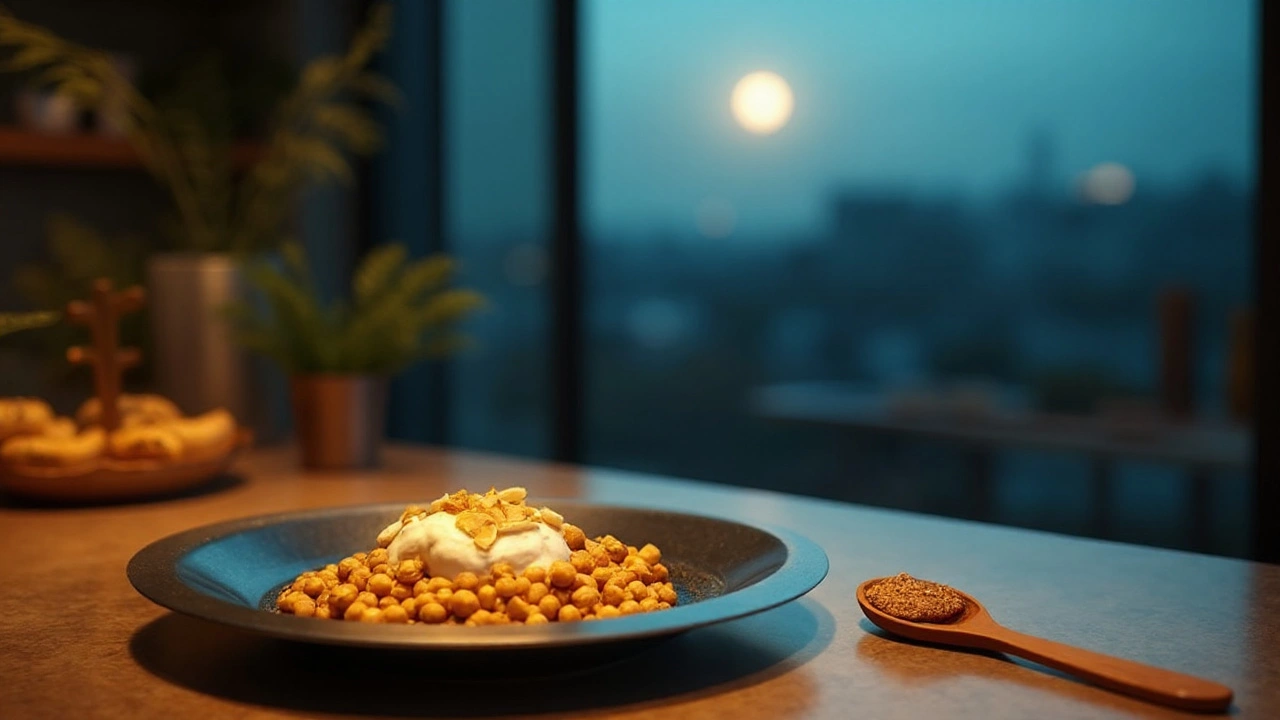Nighttime Snack Checker
Nighttime snack for weight loss is a small, nutrient‑dense food consumed within two hours of sleep that supports fat burning and prevents muscle loss. When you’re trying to shed pounds, the myth that you must starve after dinner can backfire. The body still needs fuel, but the right kind of fuel can actually accelerate fat loss while you snooze.
Why What You Eat Before Bed Matters
During sleep, your metabolism slows, yet hormone levels that control hunger (ghrelin) and fullness (leptin) keep shifting. A well‑chosen snack can keep insulin stable, curb midnight cravings, and provide the amino acids your muscles need for repair. Studies from the Journal of Clinical Endocrinology (2023) show that a protein‑rich snack before bedtime improves overnight fat oxidation by up to 15% compared to going to bed empty‑stomach.
Key Nutrients for an Effective Nighttime Snack
- Protein - Supplies amino acids, prevents muscle breakdown, and raises thermic effect of food.
- Fiber - Slows digestion, stabilizes blood sugar, and keeps you feeling full.
- Healthy fats - Provide satiety without spiking insulin.
- Low‑glycemic carbs - Offer a gentle glucose release to avoid insulin spikes.
Balancing these nutrients in a snack under 150 calories creates a metabolic environment that favors fat burning instead of storage.
Top 5 Snacks Backed by Science
Below are five options that hit the nutrient checklist while staying tasty.
- Greek yogurt is a high‑protein, low‑fat dairy product, delivering about 10g protein per 100g and calcium. Mix with a sprinkle of cinnamon for flavor without extra sugar.
- Cottage cheese is a curd cheese rich in casein protein, which digests slowly-perfect for overnight muscle support. A half‑cup provides roughly 14g protein.
- Almonds are nutrient‑dense nuts packed with monounsaturated fats, fiber, and magnesium. Twelve almonds equal about 80kcal and 3g protein.
- Mixed berries are low‑glycemic fruits high in antioxidants and fiber. A cup provides roughly 70kcal, 2g fiber, and a natural sweet taste. Pair with a dollop of Greek yogurt for extra protein.
- Chia seed pudding is a gelatinous mix of chia seeds, plant‑based milk, and optional vanilla. One tablespoon of chia offers 5g fiber, 2g protein, and omega‑3 fatty acids. Let it thicken for 30 minutes before bed.
Quick Comparison of the Best Nighttime Snacks
| Snack | Calories | Protein | Fiber | Key Benefit |
|---|---|---|---|---|
| Greek yogurt (100g) | 59 | 10g | 0g | High‑protein, calcium |
| Cottage cheese (½ cup) | 110 | 14g | 0g | Slow‑digest casein |
| Almonds (12 pcs) | 80 | 3g | 1.5g | Healthy fats & satiety |
| Mixed berries (1cup) | 70 | 1g | 3g | Antioxidants, low‑glycemic |
| Chia pudding (2tbsp chia + ½ cup milk) | 120 | 4g | 5g | Omega‑3, fiber |

How to Pair Snacks for Maximum Fat‑Burn
Mixing protein with fiber and a touch of healthy fat creates a balanced glycemic response. Here are three easy combos:
- Greek yogurt + a handful of berries (≈120kcal). The berries add fiber, while yogurt supplies protein.
- Cottage cheese + a drizzle of almond butter (≈150kcal). Almond butter adds monounsaturated fats, extending satiety.
- Chia pudding topped with sliced almonds (≈130kcal). The combo boosts omega‑3, protein, and crunch.
Keep total calories under 150kcal to avoid a caloric surplus that could stall weight loss.
Common Pitfalls and How to Avoid Them
- Over‑sweetening: Adding honey or sugary sauces can spike insulin. Opt for natural spices like cinnamon or vanilla.
- Portion mis‑judgment: Even healthy foods add up. Use a kitchen scale or pre‑measure servings.
- High‑glycemic carbs: White bread or sugary cereals raise blood sugar, leading to cravings. Stick to low‑GI fruits or whole‑grain options.
- Late timing: Aim to finish your snack at least 30-45minutes before lights‑out so digestion doesn’t disrupt sleep.
Practical Checklist for Your Nighttime Routine
- Choose a snack under 150kcal.
- Ensure at least 8‑10g protein.
- Add 2‑4g fiber.
- Include a source of healthy fat (5‑7g).
- Prepare the snack ahead of time to avoid impulse choices.
Following this checklist turns a simple bite into a strategic weight‑loss tool.
Next Steps: Building a Full‑Day Weight‑Loss Meal Plan
Now that you’ve mastered the bedtime bite, consider pairing it with:
- Balanced breakfast - protein + complex carbs (e.g., oats with whey).
- Mid‑day veggie‑rich lunch - fiber and micronutrients.
- Post‑workout recovery snack - fast‑acting protein.
Consistent nutrient timing creates a 24‑hour metabolic rhythm that maximizes fat loss while preserving muscle. Keep a food journal for a week, note how each snack affects your sleep quality and morning hunger, and adjust portions accordingly.
Frequently Asked Questions
Can I have a snack if I already ate a big dinner?
Yes, but keep the snack light (under 150kcal) and focused on protein and fiber. This prevents excess calories while stabilizing blood sugar.
Is casein protein better than whey before bed?
Casein digests slower, delivering amino acids throughout the night, making cottage cheese or a casein shake ideal for muscle preservation.
Will a nighttime snack affect my sleep quality?
A small, balanced snack can actually improve sleep by preventing hunger pangs that disrupt rest. Avoid caffeine and high‑sugar foods, which can interfere with REM cycles.
How many calories should my bedtime snack contain?
Aim for 100‑150kcal. This range provides enough nutrients to support metabolism without creating a surplus that hinders weight loss.
Can I use protein bars as a bedtime snack?
Only if the bar is low in added sugars and under 150kcal. Many commercial bars contain sugar alcohols that can cause digestive discomfort at night.
Choosing the right nighttime snack for weight loss doesn’t have to be a guess. With protein, fiber, and healthy fats in the right portions, you can boost overnight fat burning, stay full, and wake up ready to crush your goals.
